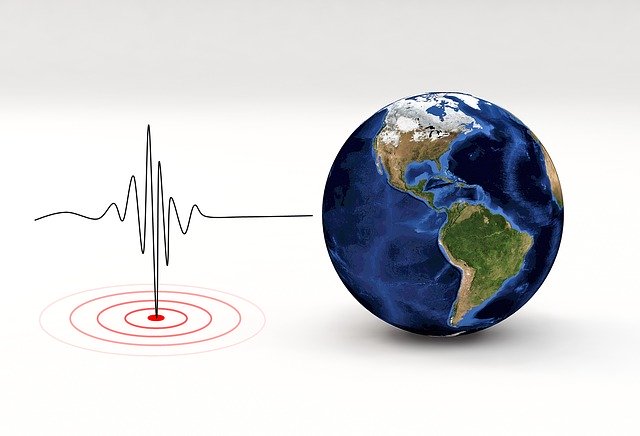
On March 18, a magnitude 5.7 earthquake struck the Salt Lake City, Utah area, causing some material losses. It was an atypical earthquake of which it can be considered a quite rare phenomenon, the last event of which took place in 1992. This earthquake was fully identified by the real-time interactive earthquakes monitor, provided by the USGC.
In addition to the Utah earthquake, this month there was another earthquake in Kasina, Croatia of 5.4 degrees on March 21, and not long before another earthquake of 5.7 in Xegar, China. All of these earthquakes were fully identified by the USGC and recorded in its database. Even when some are atypical earthquakes or far from the boundaries of tectonic plates, the effects were felt.
This real-time interactive earthquakes monitor is shown here: (Credits to USGC)
Two types of measurement: Mercalli and Ritcher
To measure the magnitude of an earthquake, the most famous scales to measure them are Mercalli and Ritcher. The first arises in 1902 from Giuseppe Mercalli and is based on movement, and the second was proposed by Charles F. Richter and presented in 1935, it is based on logarithmic magnitude.
Mercalli scale
Phase 1: Not felt, only a few in certain conditions.
Phase 2: Feeling for few at rest, especially in high areas
Phase 3: It is felt on the upper floors of buildings, however it is not always recognized as an earthquake, but as a heavy vehicle.
Phase 4: It is felt by several outside during the day and when it gets dark. Dishes vibrate and feel like heavy truck.
Phase 5: Felt by the majority, fallen dishes, movement of unstable objects.
Phase 6: Heavy furniture moves, temporary or poorly made structures fall.
Phase 7: Damage to buildings and constructions, collapse of weak constructions.
Phase 8: Fall of monuments, firm objects, partial collapse of structures.
Phase 9: Destroyed solid wooden structures, damaged foundations.
Phase 10: Destroyed walls and foundations, bent train rails.
Phase 11: Few structures remain standing, difficult to stay standing, cracks in the ground.
Phase 12: Large masses are moved, total destruction, objects thrown into the air.
Ritcher scale
2.0 – 2.9: Generally not felt, around 1000 a day.
3.0 – 3.9: Perceived at rest.
4.0 – 4.9: Balancing of suspended objects, about 7000 a year.
5.0 – 5.9: Damage to weak buildings, 1,000 a year.
6.0 – 6.9: Destroy nearby areas, 100 a year.
7.0 – 7.9: Serious damage to populations over hundreds of kilometers, 15 a year.
8.0 – 8.9: Serious damage in large areas, 1 to 3 a year.
9.0 – 9.9: Catastrophic thousands of kilometers, 1 every 20 years.
10.0 or more: Never seen.

Early earthquake detection
The use of technology has allowed not only the areas with the highest risk of seismic activity, but also the development of mobile applications that can warn of an earthquake shortly before it occurs. The application is called “Earthquake Detector”. The geologist Patricio Valderrama, specialist in the subject, explained the details regarding the application, which through the phone’s sensors, and following a movement pattern by hundreds of devices in some region, can warn other cities about the earthquake before that I get there.
Although technology can also provide a false alarm, some authors have described that certain animals, such as ants, earthworms, and tarantulas, come out of the ground when an earthquake is about to strike.
Preparation for an earthquake
Regardless of predicting when it will tremble, there are other more important factors that can help us prepare for a seismic or volcanic eventuality, such as the following:
- Having a family store: Storing food and drinking water, which allows us to survive a major catastrophe. Canned foods and cereals (grains) with a long expiration date are recommended.
- An emergency backpack: It must contain our documents and we recommend rechargeable batteries, a lamp, warm clothes, a first-aid kit, medicine, gel alcohol, chocolates, openers, a razor, hygiene items, a cup and cutlery, a lighter, matches, copies of keys , extra money and let’s not forget our identifications. This backpack is important in case you have to evacuate.
- Know perfectly the evacuation routes from our home, emergency and family numbers, family communication about possible scenarios and agree on meeting points. So also know the municipal plans and participate in the drills.
